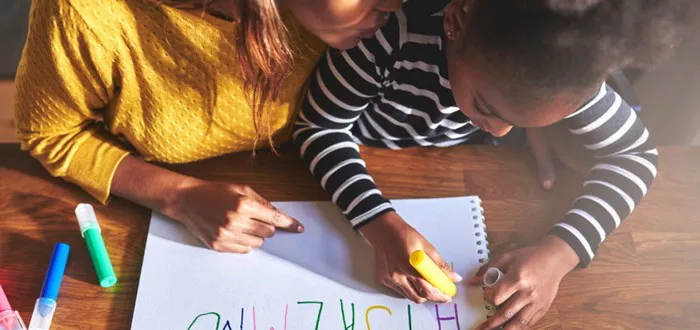In today’s fast-paced digital world, note-taking apps have become indispensable tools for students, professionals, and individuals alike. However, for those with dyslexia, traditional note-taking methods can present significant challenges. Dyslexia, a specific learning difficulty that affects reading and writing skills, requires innovative solutions to enhance productivity and accommodate individual needs. Fortunately, advancements in technology have paved the way for note-taking apps designed specifically to support individuals with dyslexia. In this comprehensive guide, we will explore the features, benefits, and considerations of various note-taking apps tailored to empower individuals with dyslexia.
Understanding Dyslexia
Before delving into the realm of note-taking apps, it is crucial to grasp the nuances of dyslexia and its impact on learning. Dyslexia is a neurological condition that affects language processing, leading to difficulties in reading, writing, spelling, and sometimes speaking. Individuals with dyslexia may struggle with decoding words, recognizing sounds, and organizing information coherently. These challenges can hinder academic performance, professional success, and overall confidence.
The Role of Note-Taking Apps
Note-taking is a fundamental skill for academic success and professional development. However, traditional methods such as handwriting or typing on a conventional word processor may pose barriers for individuals with dyslexia. Note-taking apps offer a digital alternative that can cater to diverse learning styles and mitigate the challenges associated with dyslexia. By providing features such as customizable fonts, spell-checkers, voice-to-text functionality, and organization tools, these apps empower users to capture, organize, and review information more effectively.
Key Features to Consider
When evaluating note-taking apps for dyslexia, several key features should be prioritized to ensure optimal usability and accessibility:
1. Dyslexia-Friendly Fonts: Choose apps that offer a variety of dyslexia-friendly fonts, such as OpenDyslexic or Dyslexie, which are specifically designed to enhance readability for individuals with dyslexia.
2. Text Customization Options: Look for apps that allow users to adjust text size, spacing, and contrast to accommodate individual preferences and visual comfort.
3. Spell-Check and Auto-Correction: Opt for apps with built-in spell-checkers and auto-correction features to assist with spelling and grammar, reducing errors and enhancing writing fluency.
4. Voice-to-Text Functionality: Consider apps that support voice-to-text conversion, enabling users to dictate notes verbally rather than relying solely on typing or handwriting.
5. Organization and Navigation Tools: Seek apps with intuitive organization features, such as folders, tags, and search functionality, to facilitate easy retrieval and review of notes.
6. Integration with Assistive Technologies: Ensure compatibility with assistive technologies such as screen readers and speech synthesis software to enhance accessibility for users with dyslexia.
Top Note-Taking Apps for Dyslexia
Now that we understand the essential features to look for, let’s explore some of the top note-taking apps specifically tailored to support individuals with dyslexia:
1. Evernote: Evernote is a versatile note-taking app known for its robust features and cross-platform compatibility. With customizable fonts, spell-checking capabilities, and seamless integration with third-party tools, Evernote offers a comprehensive solution for users with dyslexia.
2. Notability: Notability is a popular choice among students and professionals for its intuitive interface and powerful annotation tools. In addition to dyslexia-friendly fonts and text customization options, Notability supports audio recordings and handwriting recognition, providing multiple modalities for capturing and organizing information.
3. OneNote: Developed by Microsoft, OneNote is a free-form digital notebook that enables users to create, organize, and share notes across devices. With its accessibility features, including dyslexia-friendly fonts and immersive reader mode, OneNote is well-suited for individuals with dyslexia seeking a versatile and inclusive note-taking solution.
4. GoodNotes: GoodNotes is a feature-rich app designed specifically for handwritten notes and annotations. While handwriting may pose challenges for some individuals with dyslexia, GoodNotes offers customizable paper templates, zoom functionality, and text conversion options to enhance readability and usability.
5. Voice Dream Writer: Voice Dream Writer is a unique note-taking app that focuses on supporting users with dyslexia and other reading difficulties. With its advanced word prediction, speech feedback, and dyslexia-friendly fonts, Voice Dream Writer empowers users to compose and edit text more efficiently and confidently.
Conclusion
In conclusion, selecting the best note-taking app for dyslexia requires careful consideration of features, functionality, and user preferences. By prioritizing accessibility, customization, and integration with assistive technologies, individuals with dyslexia can harness the power of digital note-taking to enhance productivity, learning, and communication. Whether it’s capturing lecture notes, brainstorming ideas, or organizing research materials, the right note-taking app can unlock new opportunities and empower users to thrive in their academic and professional pursuits.



